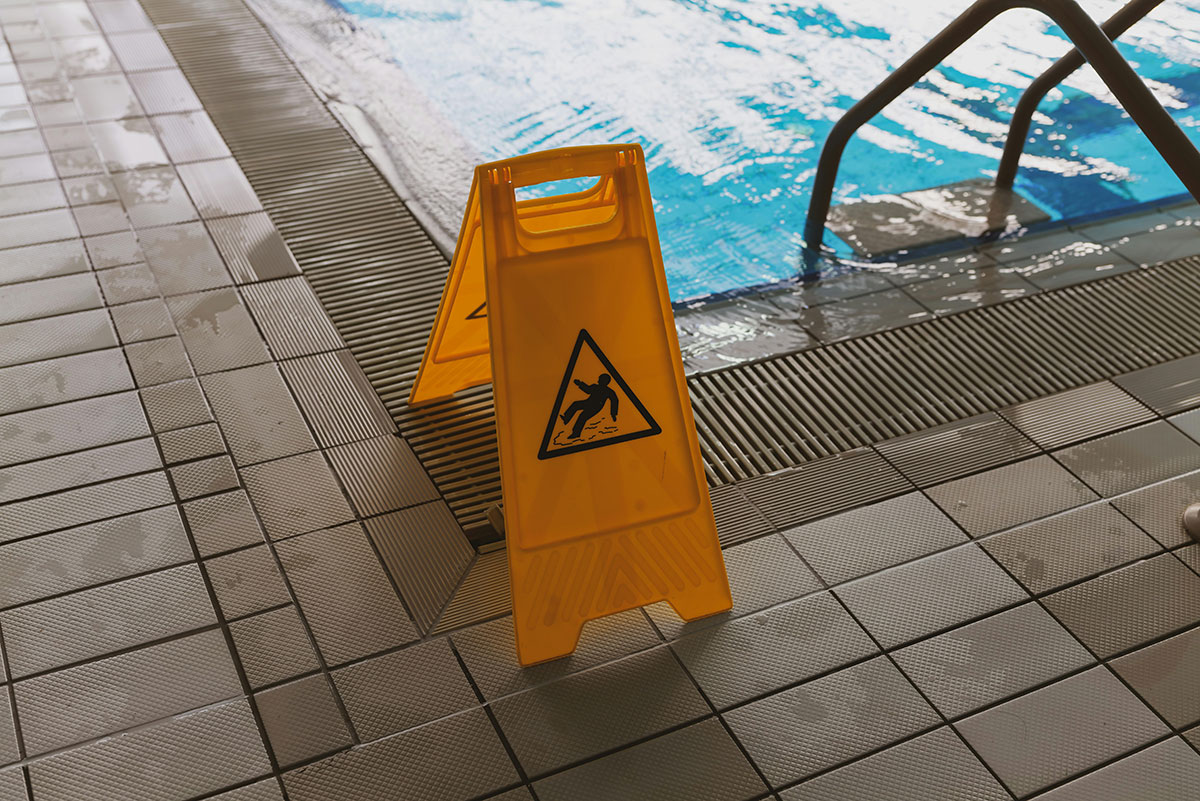Slip accidents are more common and their consequences more serious than we think. After all, a day of fun should never lead to weeks in a plaster-cast, because of poor flooring. That’s why Amusement Logic always demands standardised test-certified flooring for all leisure and tourism projects whose design, architecture and construction it takes care of, whether they are campsites, shopping centres, water parks, theme parks, sports centres, Canyoning or any other. Among the tests required by the different regulations, the following are the most common:
Test required by the countries of the European Union.
This is the standardised test EN 16165:2021 for determining the slip resistance of pedestrian surfaces. In this case, we cite the Spanish transposition of the European standard, or UNE-EN 16165:2022.
The test is very simple: a pendulum device is used with a 180º trajectory. At the end of the arm there is a rubber foot that rubs against the sample. Once levelled, the arm is released to give a reading of the PTV (Pendulum Test Value) slipperiness index. The results of these tests are used to obtain a slip resistance classification (Rd) as defined by the Technical Building Code (TBC):
| Classification of floors according to their slipperiness | |
| Slip resistance (Rd) | Class |
| Rd ≤ 15 | C0 |
| 15 < Rd ≤ 35 | C1 |
| 35 < Rd ≤ 5 | C2 |
| Rd > 45 | C3 |
And according to the same
TBC, for aquatic areas:
| Indoor wet areas, such
as entrances to buildings from outside, covered terraces, changing rooms, bathrooms, toilets, kitchens, etc..: |
|
| Surfaces with a slope of less than 6%. | C2 |
| Surfaces with a slope equal to or greater than 6% and stairs. | C3 |
| Outdoor areas. Swimming pools (including bottoms). Showers. | C3 |
This means that for outdoor areas and swimming pools it requires a C3 type floor.
The DIN standard
In the case of general industry, however, many manufacturers certify their products according to the German standard DIN 51130 or DIN 51097 (where DIN stands for the German Institute for Standardisation). In the first test, the material is sprayed with engine oil, so that a person walks with working shoes on a plane of varying inclination. In the second test, instead of oil, the floor is wetted with water and walked on barefoot. On this occasion, the standard establishes the following limits:
Class A: maximum slopes of 12º on household floors.
Class B: up to 18º slopes in bathrooms and showers.
Class C: up to a maximum slope of 24º in wet-rooms.
Available materials
There are numerous paving products adapted to outdoor and swimming pool areas, suitable for the projects whose design, architecture and construction Amusement Logic deals with, for which, let’s remember, the regulations require a C3 type floor. Ceramic flooring, porous concrete tiles or continuous concrete, rubber tiles, WPC (Wood Plastic Composite) decking, are some examples.
Amusement Logic takes all these considerations into account in the construction of the leisure and tourism projects it deals with, in other words, campsites, shopping centres, water and theme parks, sports centres, canyoning parks, etc.
By Miquel Solís, senior architect in the Architecture Department of Amusement Logic






